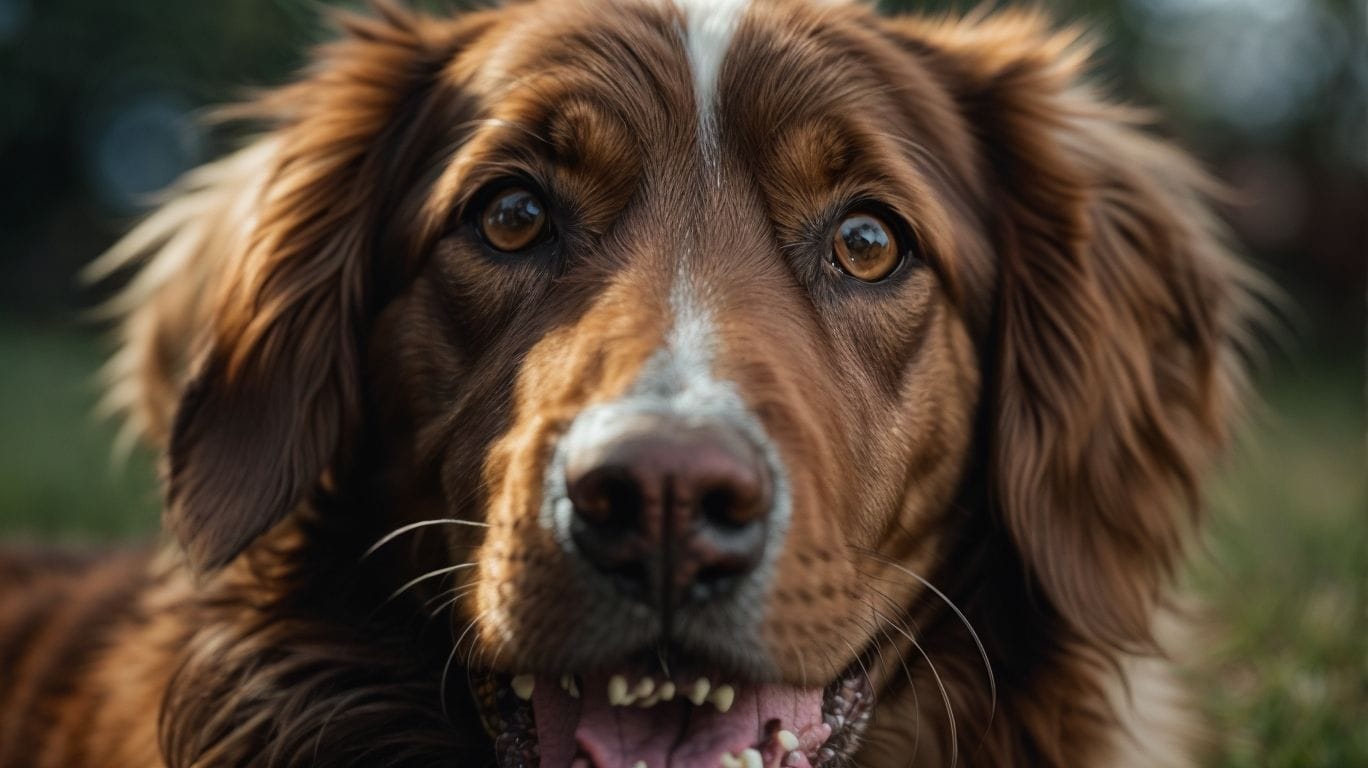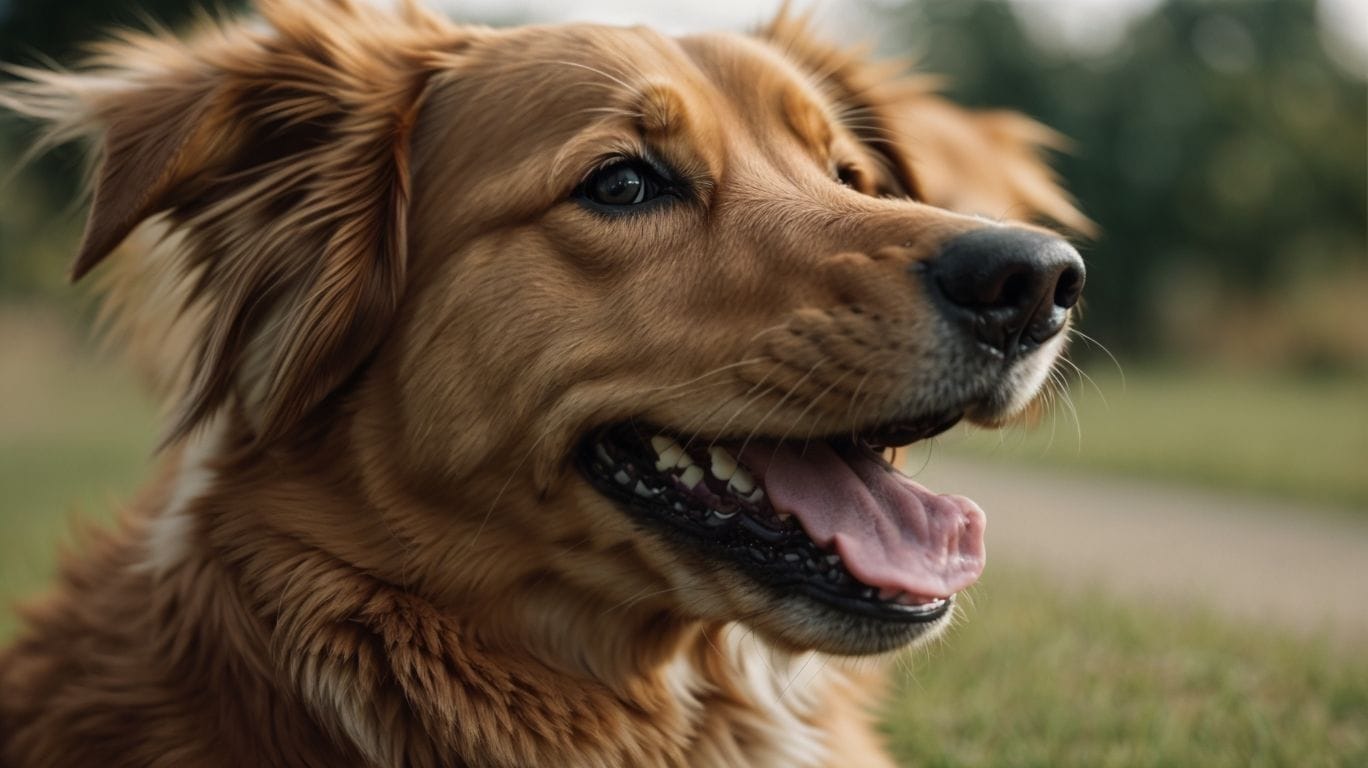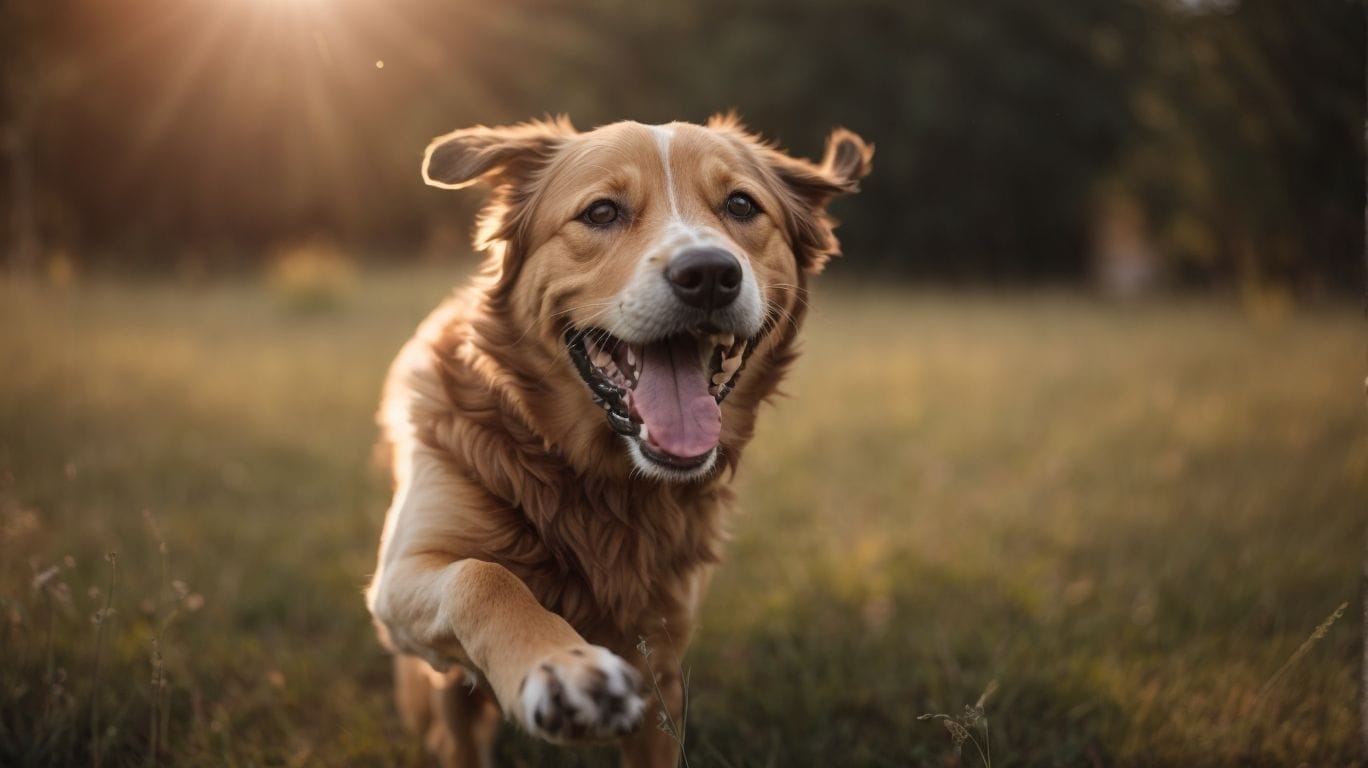Can Dogs Smile? This is a question that many dog owners have pondered. Dogs are known for their expressive faces, and it’s natural to wonder if their facial expressions are a form of smiling. Understanding canine facial expressions can shed light on this fascinating topic.
What are the common facial expressions of dogs? Dogs use a variety of facial expressions to communicate their emotions. Raised eyebrows, relaxed eyes, and a slightly open mouth are signs of a content and relaxed dog. Do dogs smile like humans? While dogs may not smile in the same way humans do, they can exhibit behaviors that resemble a smile, such as lifting their lips and showing their teeth.
Signs of happiness in dogs include a relaxed body posture, a wagging tail, and bright, alert eyes. However, it’s important to note that a dog’s “smile” is not always an indicator of happiness. It can also be a sign of fear or anxiety, so it’s crucial to consider the context and other body language signals.
The science behind dog smiles is a subject of interest among researchers. Do dogs have the ability to smile, or is it a misinterpretation by humans projecting their emotions onto their pets? Understanding how a dog’s facial muscles contribute to the perception of a smile can provide insights into this phenomenon.
Interpreting a dog’s facial expressions goes beyond just looking for a smile. Dog owners should be aware of other facial expressions that can signal fear, aggression, or stress. Knowing how to differentiate between a dog’s smile and other facial gestures can help in understanding their emotions accurately.
Several factors can influence a dog’s facial expressions. Does breed or size affect a dog’s smiling ability? Certain breeds may have distinct facial features that make it easier or harder to perceive a smile. A dog’s personality plays a role in their facial expressions, as some dogs may be more expressive than others.
Understanding canine emotions goes beyond just the concept of smiling. Dogs can display happiness in various ways, such as through their body language, vocalizations, and interactions with their environment. Ensuring your dog’s happiness involves meeting their physical and emotional needs, providing proper care, and fostering a loving and positive relationship.
Key takeaways:
- Dogs can display facial expressions that resemble a smile, but it does not necessarily indicate happiness. Understanding their overall body language is essential to correctly interpreting their emotions.
- A dog’s “smile” is often a facial expression called a “submissive grin,” which can be a sign of anxiety, fear, or a social appeasement gesture.
- Factors such as breed, size, personality, and individual differences can influence a dog’s facial expressions, including the appearance of a smile.
Can Dogs Smile?

Photo Credits: Petnarnia.Com by Jerry Wilson
Dogs are capable of expressing happiness and joy through their facial expressions, but whether or not they can smile is a matter of interpretation. Can dogs smile? While dogs cannot physically smile in the same way humans do, they can exhibit behaviors that are considered to be smiling. For example, a dog may wag its tail, have relaxed facial muscles, and appear overall content. These behaviors indicate that the dog is happy and comfortable in its environment. So, while dogs may not technically smile in the same way humans do, they can certainly express their happiness and bring a smile to our faces.
Understanding Canine Facial Expressions

Photo Credits: Petnarnia.Com by Ronald Perez
Understanding canine facial expressions is a crucial skill for dog owners. Dogs primarily communicate through their facial expressions, and the ability to interpret these signals helps us comprehend their emotions and requirements. Some common canine facial expressions include relaxed eyes, raised eyebrows, and a relaxed or tense mouth. For instance, when a dog has raised eyebrows and relaxed eyes, it typically indicates friendliness and relaxation. By carefully observing and interpreting these expressions, we can reinforce our bond with our furry companions and ensure they receive the necessary care and attention.
Let me share a true story: I had a rescue dog named Max who had a challenging past and struggled to trust people. Gradually, I became proficient in reading his facial expressions and understanding his anxiety or fear. By respecting Max’s boundaries and giving him space when he needed it, we managed to establish trust and develop a strong bond. Eventually, I noticed a transformation in his facial expressions – he began displaying a relaxed mouth and softer eyes, clear signs that Max was finally feeling safe and content in his new home. Truly, understanding canine facial expressions made a significant difference in our relationship.
What Are the Common Facial Expressions of Dogs?
What Are the Common Facial Expressions of Dogs?
Dogs have various common facial expressions that they use to communicate their emotions. These expressions, which include raised eyebrows, relaxed ears, and a relaxed mouth, are vital for dog owners to understand. By recognizing and interpreting these expressions, owners can better comprehend their dogs’ emotions and needs.
However, one question that often comes up is, Can Dogs Smile? It’s a subject of curiosity for many dog owners.
For instance, a happy dog might show a “smile” with a relaxed open mouth and tongue hanging out. This expression indicates the dog’s contentment and joy. Conversely, other expressions can signify fear, aggression, or stress. These may include raised hackles, pinned-back ears, or bared teeth.
Understanding and being aware of these facial expressions is essential for dog owners. It enables them to create a positive and comfortable environment for their furry friends, contributing to their overall happiness and well-being.
Do Dogs Smile Like Humans?
Do Dogs Smile Like Humans?
Dogs have facial expressions that may resemble human smiles, but do dogs smile like humans? Their purpose and meaning differ. Dogs don’t smile like humans, as their facial anatomy and muscles are different. They can exhibit behaviors, such as panting, wagging their tails, and showing their teeth, that may resemble a smile. These expressions are often associated with friendliness and happiness in dogs. Dog owners need to understand the specific facial expressions and body language of their dogs to interpret their emotions accurately. By observing their overall behavior and considering their context, owners can better understand their furry friends’ feelings.
Signs of Happiness in Dogs

Photo Credits: Petnarnia.Com by Billy Rodriguez
Recognizing signs of happiness in dogs is crucial to understanding their emotions and ensuring their well-being. Dogs communicate their happiness in various ways:
- Tail wagging: A loose, wide wag with a relaxed body is a clear indication of happiness in dogs.
- Playfulness: Engaging in play, bouncing, and zoomies are all signs that a dog is happy and content.
- Relaxed body language: Dogs show contentment through relaxed ears, soft eyes, and a loose body posture.
- Exposing the belly: Trust and happiness are displayed when a dog shows their belly.
- Appetite and sleep: A happy dog will have a healthy appetite and regular sleep patterns.
Fact: Dogs also communicate their happiness through a “play face,” which includes a relaxed mouth and panting.
What Does a Happy Dog Look Like?
What Does a Happy Dog Look Like?
A happy dog can display several distinct physical cues that indicate their positive emotional state. These can include a relaxed and open mouth, with the tongue hanging out slightly. Their eyes will appear bright and alert, with a relaxed expression. The ears may be perked up or relaxed, depending on the dog’s breed and personality. A wagging tail is a clear sign of happiness, although the position and speed of the wag may vary depending on the dog’s traits. A happy dog will exhibit a relaxed body posture and will often engage in playful behavior, such as running and jumping.
Is a Dog’s “Smile” an Indicator of Happiness?
Is a Dog’s “Smile” an Indicator of Happiness?
A dog’s “smile” may not always be an indicator of happiness. While dogs do exhibit facial expressions, their “smiles” can mean different things. Some dogs may “smile” when they are relaxed or content, but others may display this expression when they are anxious or submissive. To understand if a dog is truly happy, it is important to consider their overall body language and behavior. Tail wagging, relaxed body posture, and playful behavior are better indicators of a dog’s happiness. Dog owners must learn and interpret their dog’s facial expressions along with other gestures to ensure their well-being and happiness.
The Science Behind Dog Smiles

Photo Credits: Petnarnia.Com by Eric Clark
The Science Behind Dog Smiles: A dog’s smile is not just a charming expression but also a fascinating phenomenon supported by scientific explanations. Studies have shown that a dog’s “smile” serves as a means of communication and social bonding. When a dog exhibits a smiling-like expression, it actually signifies relaxation and happiness. This can be attributed to the release of endorphins, triggered by contentment in dogs, which in turn impacts their facial muscles. Understanding the science behind dog smiles not only helps us gain insights into their emotions but also strengthens our connection with our beloved furry companions. By being able to recognize the signs of a dog’s smile, we are empowered to create a positive and enriching environment tailored to their well-being.
Do Dogs Have the Ability to Smile, or Is it a Misinterpretation?
Do Dogs Have the Ability to Smile, or Is it a Misinterpretation?
Dogs cannot smile like humans. While humans interpret certain facial expressions on dogs as smiles, it is actually a misinterpretation. The structure of a dog’s face and the positioning of their facial muscles make it physically impossible for them to form a true smile. Dogs do display certain behaviors and expressions that can indicate happiness, such as a relaxed and open mouth, wagging tail, and bright eyes. Understanding these signs of happiness and providing a loving and comfortable environment is key to ensuring a dog’s well-being and happiness.
How Do a Dog’s Facial Muscles Contribute to the Perception of a Smile?
How do a dog’s facial muscles contribute to the perception of a smile? A dog’s facial muscles play a crucial role in creating the impression of a smile. When a dog is feeling relaxed and happy, their facial muscles around the mouth and eyes may appear relaxed and slightly uplifted, giving the perception of a smile. The corners of the mouth in a smile are pulled up by the zygomaticus major muscle, which runs from the cheekbone to the corners of the mouth. Additionally, the orbicularis oculi muscle, which encircles the eye, can cause the eyes to squint or appear smaller when a dog is genuinely happy and content. These muscle movements collectively contribute to the overall perception of a dog’s smile.
Interpreting a Dog’s Facial Expressions

Photo Credits: Petnarnia.Com by Jesse Clark
Understanding a dog’s emotions and needs relies on interpreting their facial expressions. Dogs communicate through their eyes, ears, mouth, and body posture. It is crucial to pay attention to key indicators such as a relaxed mouth and eyes, raised eyebrows, and relaxed ears, as they may signify a happy and relaxed dog. Conversely, a tense mouth, narrowed eyes, and flattened ears could indicate fear or aggression. Accurate interpretation of a dog’s emotions requires observing the overall context and body language. For instance, a wagging tail accompanied by other relaxed body signals expresses joy and friendliness. By observing and understanding these expressions, humans can establish a deeper bond with dogs.
It is also a fact that dogs can use facial expressions to deceive humans. They may lift their eyebrows to feign sadness and attract attention or treats.
What Other Facial Expressions Should Dog Owners Be Aware Of?
Dog owners should be aware of various facial expressions that dogs use to communicate their emotions. These expressions include raised eyebrows, a relaxed mouth, perked ears, and a wagging tail. It’s important to note that not all facial expressions indicate happiness. For example, a tightly closed mouth, furrowed brow, bared teeth, or any other facial expression may indicate fear, aggression, or discomfort. What other facial expressions should dog owners be aware of? Dog owners should pay attention to the context and body language to interpret their dog’s emotions accurately. Understanding these additional facial expressions can help owners respond appropriately and ensure their dog’s well-being and happiness.
How do you differentiate between a dog’s smile and other facial gestures?
To differentiate between a dog’s smile and other facial gestures, follow these steps:
- Observe the entire face: Look at the overall expression of the dog’s face, taking note of the position of the ears, eyes, and mouth.
- Focus on the eyes: Pay attention to the eyes to see if they are relaxed and bright, which can indicate happiness.
- Check the mouth: Look for relaxed lips and a slightly open mouth, which can suggest contentment.
- Note the tail: A wagging tail may indicate happiness, while a tucked or still tail can indicate fear or anxiety.
- Consider body language: Look at the dog’s posture and overall body language to get a better understanding of their emotional state.
One day, I wondered, “How to differentiate between a dog’s smile and other facial gestures?” So, I observed my dog, Max, with a wide grin on his face. However, upon closer observation, I realized that his mouth was closed tightly, and his ears were pinned back, indicating fear rather than happiness. It was a reminder of the importance of understanding a dog’s facial expressions to interpret their emotions accurately.
Factors That Influence a Dog’s Facial Expressions

Photo Credits: Petnarnia.Com by Richard Garcia
Factors That Influence a Dog’s Facial Expressions
A dog’s facial expression can be influenced by multiple factors, including their mood, emotions, and physical state. Just like humans, dogs can exhibit happiness through a relaxed and open mouth, bright eyes, and a wagging tail. Conversely, fear or anxiety may be evidenced by a tense mouth, wide eyes, and a tucked tail. Additionally, pain or discomfort can lead to a wrinkled forehead or a tight-lipped expression. It is crucial to pay close attention to these cues in order to gain a better understanding of your dog’s needs and emotions.
Does Breed or Size Affect a Dog’s Smiling Ability?
The breed or size of a dog does not determine their ability to smile. Dogs’ facial expressions, including “smiles,” are not directly linked to breed or size but rather to their emotions and behaviors. Smiling in dogs is often a result of happiness, contentment, or relaxation. It is crucial to understand the individual dog’s body language and cues to interpret their emotions accurately accurately. For instance, a happy dog may have a relaxed body, wagging tail, and soft eyes. While breed or size may influence the visibility of a dog’s smile due to variations in facial structure, it does not affect their ability to express happiness.
True story:
I have a small mixed-breed dog named Bella, who has the most adorable smile. Regardless of her size, she can’t help but show her happiness through her wide grin and wagging tail. It’s heartwarming to see her “smile” every morning when I wake up or when we go for walks together. It reminds me that a dog’s ability to display joy goes beyond their breed or size and is purely a reflection of their inner happiness.
How Do Dogs’ Personalities Play a Role in Their Facial Expressions?
How Do Dogs’ Personalities Play a Role in Their Facial Expressions?
A dog’s personality plays a crucial role in their facial expressions. Similar to humans, dogs possess distinct personalities that are evident in their expressions. For instance, a confident and outgoing dog will have a relaxed and open facial expression, whereas a shy or nervous dog may exhibit tense or apprehensive facial features. Their personality influences the level of expressiveness in a dog’s face. Some dogs naturally have more animated and expressive faces, while others may be more stoic and subtle in their facial expressions. To better understand and respond to a dog’s facial cues, it is essential to consider their personality.
Understanding Canine Emotions

Photo Credits: Petnarnia.Com by Joseph Robinson
Understanding canine emotions is crucial for pet owners to provide proper care and establish a strong bond with their dogs. Dogs undergo a wide array of emotions, including happiness, fear, sadness, and excitement. They express their feelings through body language, facial expressions, and vocalizations. Tail wagging, a relaxed body posture, and a playful demeanor indicate joy, while growling, raised hackles, or cowering signify fear or aggression. To comprehend your dog’s emotions, observe their behavior and master the art of interpreting their body language. Creating a robust emotional connection will enhance the overall well-being and happiness of both you and your furry companion.
What Other Ways Can Dogs Display Happiness?
What Other Ways Can Dogs Display Happiness?
Dogs can show their happiness in various ways aside from smiling. Some other indicators of happiness in dogs include wagging tails, relaxed body language, playfulness, and a relaxed facial expression. They may also exhibit behaviors such as jumping up and down, eagerly seeking attention, and bringing toys to their owners. By paying attention to these signs, dog owners can better understand when their furry friends are feeling content and joyful. It’s important to remember that each dog may have their unique ways of expressing happiness, so it’s essential to observe and understand their behaviors and cues.
How Can You Ensure Your Dog’s Happiness?
- How Can You Ensure Your Dog’s Happiness? Providing ample exercise: Regular physical activity helps release pent-up energy and keeps your dog mentally stimulated.
- How Can You Ensure Your Dog’s Happiness? Offering a balanced diet: Providing a nutritious diet that suits your dog’s nutritional needs is essential for their health and happiness.
- How Can You Ensure Your Dog’s Happiness? Ensuring socialization: Dogs are social animals, so it’s important to expose them to different people, animals, and environments to prevent boredom and anxiety.
- How Can You Ensure Your Dog’s Happiness? Giving them mental stimulation: Engage your dog’s mind with puzzle toys, training sessions, and interactive playtime.
- How Can You Ensure Your Dog’s Happiness? Providing a safe and comfortable environment: Create a cozy and secure space for your dog to rest and retreat whenever needed.
- How Can You Ensure Your Dog’s Happiness? Showing love and affection: Regularly spend quality time with your dog, showering them with love, cuddles, and positive reinforcement.
- How Can You Ensure Your Dog’s Happiness? Regular vet check-ups: Ensure your dog’s health by scheduling routine vet visits to address any potential issues promptly.
By implementing these practices, you can help maximize your dog’s happiness and foster a strong bond with them.
Some Facts About Can Dogs Smile?
- ✅ Dogs can smile as a form of active submission and appeasement greeting towards humans. (Source: https://www.usatoday.com/)
- ✅ Smiling dogs usually pull back their lips and may show their teeth, resembling a human smile. (Source: https://www.hillspet.com/)
- ✅ The reasons for dogs smiling can vary, with some believing it is a sign of happiness or excitement, while others think it is a muscular reflex. (Source: https://www.hillspet.com/)
- ✅ Dogs might smile when they are feeling calm, relaxed, or showing submission to their human counterparts. (Source: https://www.hillspet.com/)
- ✅ It is important to consider a dog’s overall body language and context to understand their emotions, as showing teeth can also be a sign of aggression. (Source: https://www.hillspet.com/)


